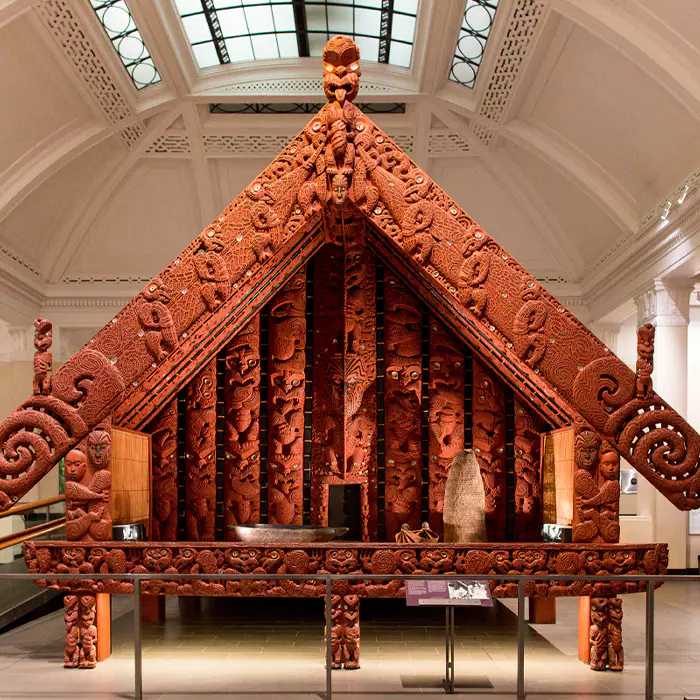Auckland Museum, a venerable cultural cornerstone in New Zealand, is currently grappling with the profound repercussions of an asbestos scare that has severely impacted its operations, visitor numbers, and financial stability. This unforeseen crisis, stemming from the detection of asbestos within its historic 1929 building and Grand Foyer, has precipitated a significant financial loss estimated at $2.5 million, directly linked to reduced tourism income and extensive museum closures.
The critical discovery of asbestos dust, first identified on May 10, 2025, forced an immediate closure of the esteemed institution. Contamination was found in various sensitive areas, including the culturally significant Māori Court and the vibrant Pacific galleries, which are among the museum’s most cherished attractions. Further investigations revealed additional hazardous remnants originating from renovations carried out in the late 1980s or early 1990s, with the century-old ventilation system suspected of exacerbating the spread of harmful particles throughout the Auckland Museum.
Following the initial discovery, the museum remained closed to the public for 24 days as specialists conducted thorough assessments. A licensed asbestos assessor was brought in to ensure compliance with stringent safety regulations before any reopening could occur. While a comprehensive strategy for asbestos removal has been devised, the full cost implications and the precise timeline for this intricate operation are still under meticulous review, highlighting the complex nature of the challenge ahead.
The financial ramifications of the closure and ongoing disruptions have been substantial. Museum officials reported an immediate $500,000 reduction in tourism income during the 24-day closure period alone. This was further compounded by a projected $2 million drop in tourism revenue for the current financial year, primarily attributed to the sustained closure of the Māori Court and the diminished overall appeal of the museum’s restricted offerings, contributing to a significant tourism impact.
In an attempt to mitigate the adverse effects on international visitation, the Auckland Museum introduced a half-price entrance fee for foreign visitors. This strategic pricing adjustment was a direct response to widespread dissatisfaction from tourists who felt the full admission fees were unjustifiable given the limited access to major exhibits. Despite this concession, many international travelers opted to cancel their plans or bypass the museum entirely, intensifying the already considerable financial pressure.
The closure of the Māori Court and Pacific galleries has been particularly detrimental, as these exhibits are fundamental to the museum’s identity and traditionally attract thousands of tourists and educational groups annually. While certain sections, such as the popular Diva exhibition, have remained accessible, the absence of these core attractions has significantly hampered the museum’s capacity to draw visitors, especially during peak tourist seasons, leaving a void in the city’s broader New Zealand tourism offerings.
Amidst these challenges, the safety of both visitors and staff has remained the paramount concern for the Auckland Museum. Since May, nearly 2,000 air tests for asbestos have been diligently conducted across the premises. Chief executive David Reeves confirmed that none of these tests have indicated asbestos levels exceeding the safety limits stipulated by WorkSafe New Zealand, providing crucial assurance that the currently open areas pose no undue risk to attendees and reinforcing confidence in the museum’s commitment to safety standards.
The arduous task of safely removing the asbestos and fully restoring the affected areas lies ahead. Museum officials anticipate that the Māori Court closure and other impacted galleries will not see a full reopening until at least October 2025, with the ambitious goal of making six galleries within the historic building accessible by then. This painstaking process, requiring significant time and financial investment, underscores the scale of the restoration efforts and the ongoing commitment to preserving this vital piece of New Zealand culture.
The asbestos discovery marks a defining chapter in the institution’s rich history, with lingering effects expected on its financial health, public perception, and overall appeal as a premier tourist destination. While the Auckland Museum is actively implementing strategies to navigate this crisis, the journey toward complete recovery will be protracted. With persistent visitor shortfalls and a substantial financial blow, the museum is proactively adapting its operational and promotional strategies to reassert its position as a leading cultural beacon and key driver of New Zealand tourism, striving for normalcy by reintroducing its beloved galleries.






Leave a Reply